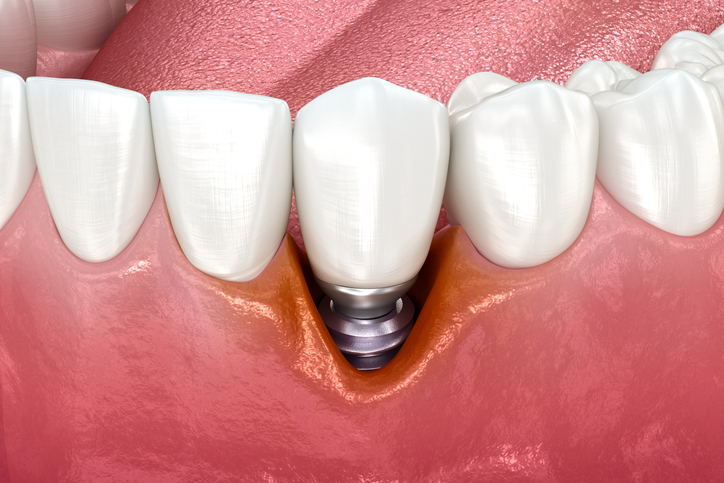
Study links submucosal microbiome to peri-implantitis severity

The severity of peri-implantitis, a chronic inflammatory condition affecting dental implants, is closely tied to specific microbial and functional changes in the submucosal microbiome, according to a new study published in the Journal of Dental Research by researchers at Hannover Medical School.
Analyzing samples from 49 implants in 34 patients, the team used advanced sequencing methods to investigate how microbial communities and their activities vary with probing depth, a key clinical indicator of disease severity.
Their findings showed that certain bacterial genera are linked to disease progression. Specifically, bacteria like Capnocytophaga and Gemella were associated with milder forms of the disease, while Pseudoramibacter was linked to more severe cases. Functional analysis revealed that pathways related to basic bacterial metabolism were diminished in severe cases. Conversely, pathways involved in cobalamin, or vitamin B12, and tetrahydrofolate biosynthesis were more active, according to the study.
Further analysis identified heightened expression of enzymes involved in proteolysis and galactose metabolism in deeper pockets, implicating these functions in tissue degradation. The main producers of these enzymes included fusobacterium, porphyromonas and prevotella species, which are pathogens previously linked to periodontal disease.
“Our results showed that the level of peri-implantitis severity is associated with distinct and significant changes in microbial composition as well as microbial functions,” the authors concluded, emphasizing that although the findings are promising, they require validation in larger, longitudinal studies.
Read more: Journal of Dental Research
The article presented here is intended to inform you about the broader media perspective on dentistry, regardless of its alignment with the ADA's stance. It is important to note that publication of an article does not imply the ADA's endorsement, agreement, or promotion of its content.